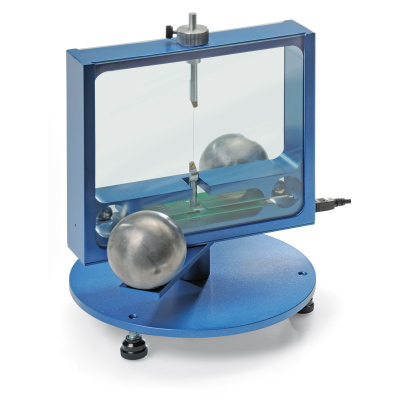Area of application:
A Cavendish torsion balance demonstrates the force of gravity between two masses and allows the gravitational constant to be determined. Thanks to the short oscillation period of just 2–4 minutes, the gravitational constant can be determined within the space of a single lesson with an accuracy of better than 10%.
Specifications
| Parameter | Value | Description |
|---|---|---|
| Mass of Large Spheres | 1 kg | Large lead spheres generating gravitational attraction. |
| Mass of Small Spheres | 15 g (0.015 kg) | Small lead spheres experiencing the gravitational force. |
| Gravitational Attraction | < 10⁻⁹ N | Extremely weak force detected between the spheres. |
| Torsion Wire | Tungsten, 25 µm diameter | Thin tungsten wire providing torsional resistance. |
| Period of Oscillation | 2–4 minutes | Time taken for one complete oscillation. |
| Angular Resolution | 25 µrad | Minimum detectable angular displacement. |
| Sampling Rate | 0.5, 1, 2, 5, 10 samples/s | Frequency of data collection. |
| Dimensions | 190 mm × 180 mm × 200 mm | Compact setup dimensions. |
| Total Weight | 5 kg | Mass of the entire apparatus. |



There are no reviews yet.